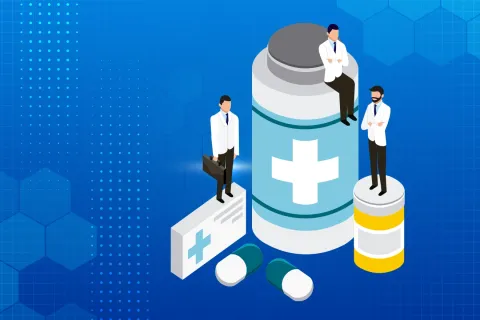Quality Risk Management (QRM) is an essential process in the pharmaceutical industry, focusing on the systematic assessment, control, communication, and review of risks that could affect the quality of medicinal products. A well-structured Quality Risk Management Plan (QRMP) is vital for maintaining compliance with Regulatory standards, ensuring patient safety, and fostering a culture of quality throughout the product lifecycle.
Importance of Quality Risk Management in Pharma
In the pharmaceutical sector, the stakes are high. Ensuring the safety, efficacy, and reliability of medications is paramount. QRM plays a crucial role in:
- Patient Safety:
Rigorous quality assurance processes prevent the distribution of substandard medications, safeguarding public health. - Regulatory Compliance:
Adherence to Good Manufacturing Practices (GMP) and other Regulatory requirements is non-negotiable. A robust QRMP helps companies remain compliant, avoiding legal repercussions and maintaining market access. - Efficacy of Treatments:
Consistent quality in manufacturing processes guarantees that each batch of medication meets the required specifications, directly impacting therapeutic success. - Brand Reputation:
High-quality standards enhance a company's reputation, fostering trust among healthcare professionals, patients, and Regulatory bodies. - Risk Mitigation:
Effective quality control measures identify and address potential risks early in the manufacturing process, minimizing the likelihood of costly recalls and legal issues.
Key Components of a Quality Risk Management Plan
A comprehensive QRMP should encompass several critical elements:
- Risk Assessment This initial phase involves identifying potential hazards and assessing their likelihood and impact. Techniques such as risk matrices can help quantify risks, guiding prioritization efforts.
- Risk Control Once risks are identified, the next step is to implement control measures. This may involve risk reduction strategies or acceptance of certain risks based on their assessed impact. The goal is to ensure that the level of effort and documentation aligns with the risk's severity.
- Risk Communication Effective communication is vital for ensuring that all stakeholders, including Regulatory bodies and internal teams, are informed about risks and the measures taken to mitigate them. This transparency builds trust and facilitates collaboration.
- Risk Review Regular reviews of the QRMP are essential to adapt to changes in the manufacturing process, Regulatory landscape, or product specifications. Continuous improvement should be a core principle of the QRM process.
- Training and Education Ensuring that all personnel are trained in QRM principles and practices is crucial. A knowledgeable workforce is better equipped to identify and manage risks effectively.
Best Practices for Developing a Quality Risk Management Plan
To create an effective QRMP, consider the following best practices:
- Cross-Functional Teams: Assemble a diverse team that includes members from quality assurance, production, Regulatory affairs, and other relevant departments. This collaboration ensures comprehensive risk identification and management.
- Data-Driven Decision Making: Utilize data analytics to inform risk assessments and control measures. This approach enhances the accuracy and reliability of decisions.
- Integration with Existing Systems: Ensure that the QRMP aligns with existing quality management systems and Regulatory requirements. This integration streamlines processes and reduces redundancy.
- Focus on Continuous Improvement: Adopt a mindset of continuous improvement, regularly updating the QRMP based on new data, Regulatory changes, and lessons learned from past experiences.
Conclusion
A QRMP is not just a Regulatory requirement; it is a strategic tool that enhances the overall quality and safety of pharmaceutical products. By prioritizing patient safety, maintaining compliance, and fostering a culture of quality, pharmaceutical companies can navigate the complexities of the industry while ensuring that they deliver safe and effective medications to the market. Implementing a robust QRMP is essential for any organization committed to excellence in pharmaceutical manufacturing and compliance.










